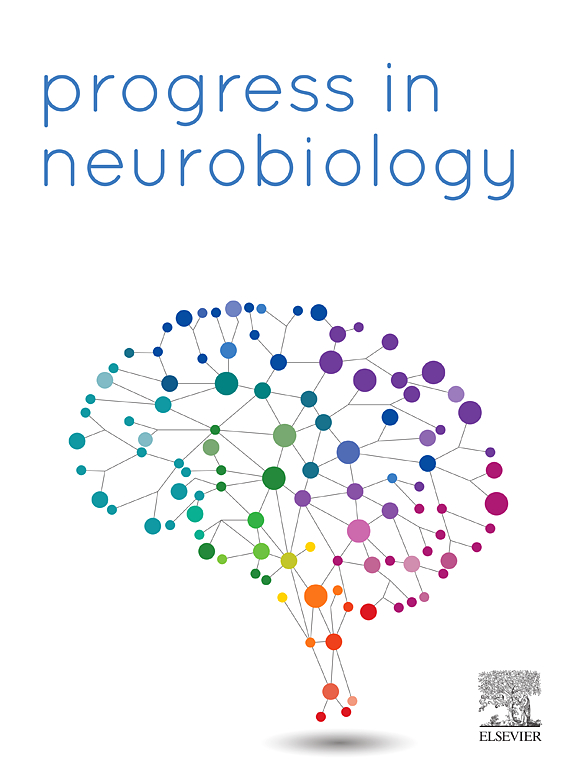Distinct Layer 6b transcriptomic subtypes parcellate the cortical mantle
IF 6.1
2区 医学
Q1 NEUROSCIENCES
引用次数: 0
Abstract
Layer 6b (L6b) neurons are a sparse population of deep neocortical neurons that govern both healthy and disordered brain states. L6b neurons have qualitatively been characterized as a thin lamina within the deepest layer of the cerebral cortex, yet the precise cell-type-specific properties and spatial organization of these neurons across the cortical mantle remain unresolved. Here, we combine single-cell RNA sequencing, highly multiplexed fluorescent in situ hybridization, and single-cell spatial transcriptomics to comprehensively characterize L6b cell-type identity, molecular heterogeneity, and spatial organization. In doing so, we identify and spatially resolve multiple distinct L6b subtypes with unique molecular signatures. To investigate the spatial organization of these subtypes across the brain, we generated a single-cell spatial transcriptomics dataset comprising 450,496 cells, offering the most extensive spatial mapping of L6b subtypes to date. Using a data-driven approach to analyze this dataset, we identify that the spatial patterning of L6b varies across the cortical mantle according to a patchwork-like composition of subtypes, which can notably extend beyond the classically defined deep location of L6b for some subtypes. We also find that L6b neurons can be transcriptionally separable but spatially intermingled with Layer 6a neurons, illustrating that a deep location within the cortex is neither sufficient nor necessary for assessing L6b identity. Our work provides the most comprehensive cellular phenotyping of L6b to date, reveals a cell-type-specific spatial-molecular framework for interpreting L6b properties and function, and will guide future investigations on the role of L6b cell subtypes and molecules in brain health and disorder.
不同的层6b转录组亚型包裹着皮质地幔。
6b层(L6b)神经元是一种稀疏的深层新皮层神经元,控制着健康和紊乱的大脑状态。L6b神经元被定性为大脑皮层最深处的薄层,但这些神经元在皮层地幔上的精确细胞类型特异性和空间组织仍未得到解决。在这里,我们结合单细胞RNA测序、高复用荧光原位杂交和单细胞空间转录组学来全面表征L6b细胞类型特征、分子异质性和空间组织。在此过程中,我们通过独特的分子特征识别和空间解析多种不同的L6b亚型。为了研究这些亚型在大脑中的空间组织,我们生成了一个包含450,496个细胞的单细胞空间转录组学数据集,提供了迄今为止最广泛的L6b亚型的空间映射。利用数据驱动的方法分析该数据集,我们发现L6b的空间格局在整个皮质地幔中根据类似补丁的亚型组成而变化,对于某些亚型,这种格局可以明显扩展到经典定义的L6b深部位置之外。我们还发现,L6b神经元在转录上是可分离的,但在空间上却与6a层神经元混杂在一起,这表明,在皮层的深层位置对于评估L6b的身份既不充分也不必要。我们的工作提供了迄今为止最全面的L6b细胞表型,揭示了解释L6b特性和功能的细胞类型特异性空间分子框架,并将指导未来L6b细胞亚型和分子在大脑健康和疾病中的作用的研究。
本文章由计算机程序翻译,如有差异,请以英文原文为准。
求助全文
约1分钟内获得全文
求助全文
来源期刊

Progress in Neurobiology
医学-神经科学
CiteScore
12.80
自引率
1.50%
发文量
107
审稿时长
33 days
期刊介绍:
Progress in Neurobiology is an international journal that publishes groundbreaking original research, comprehensive review articles and opinion pieces written by leading researchers. The journal welcomes contributions from the broad field of neuroscience that apply neurophysiological, biochemical, pharmacological, molecular biological, anatomical, computational and behavioral analyses to problems of molecular, cellular, developmental, systems, and clinical neuroscience.
 求助内容:
求助内容: 应助结果提醒方式:
应助结果提醒方式:


